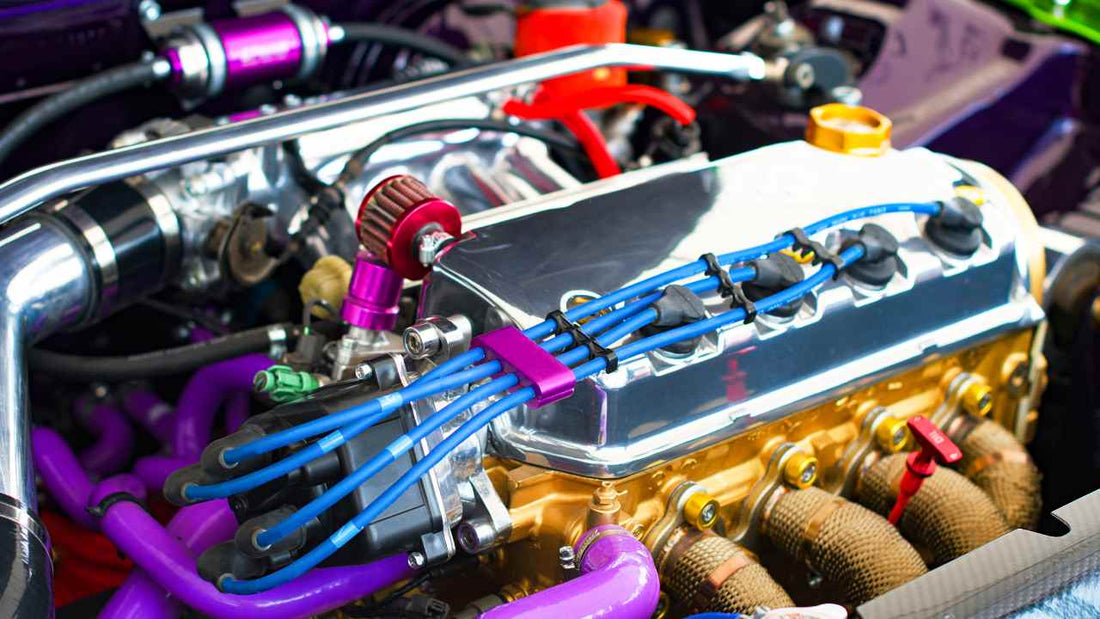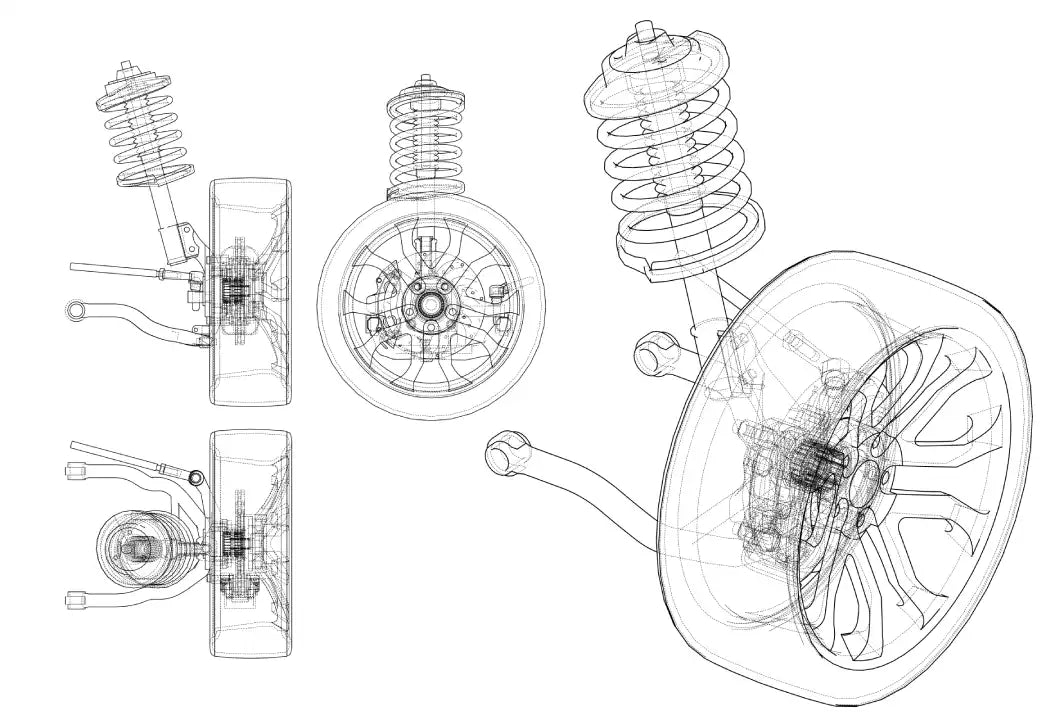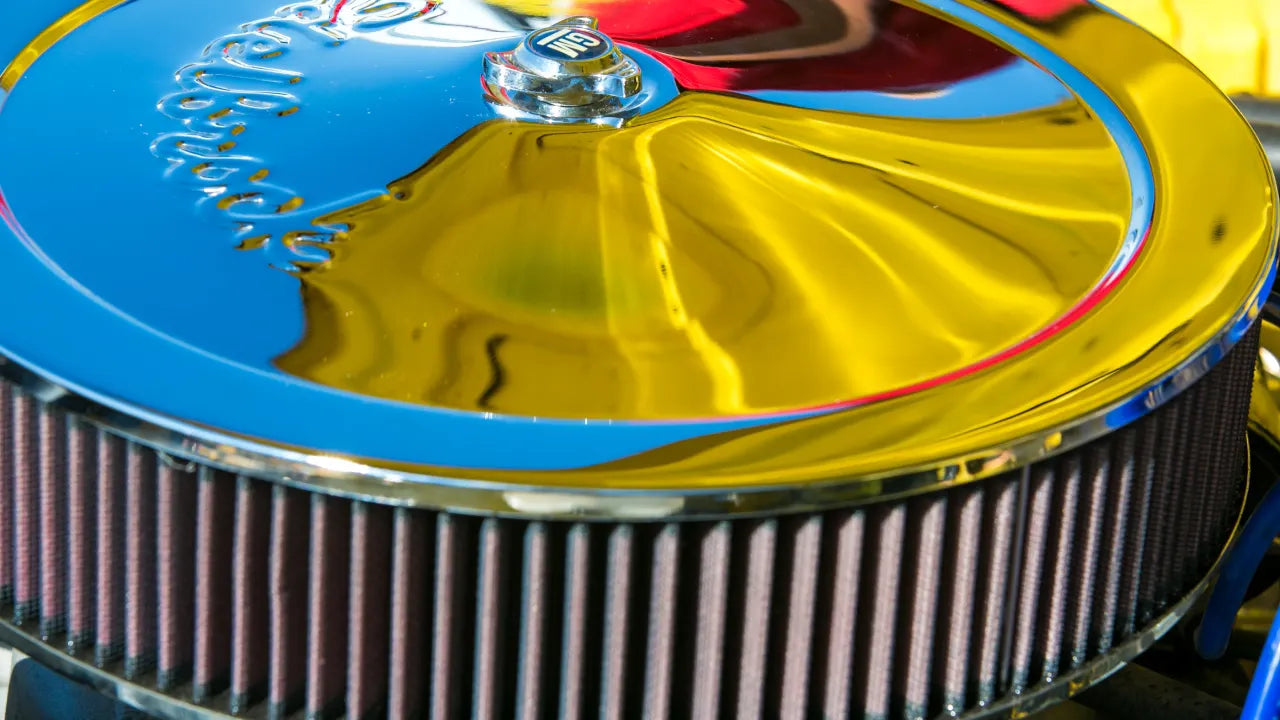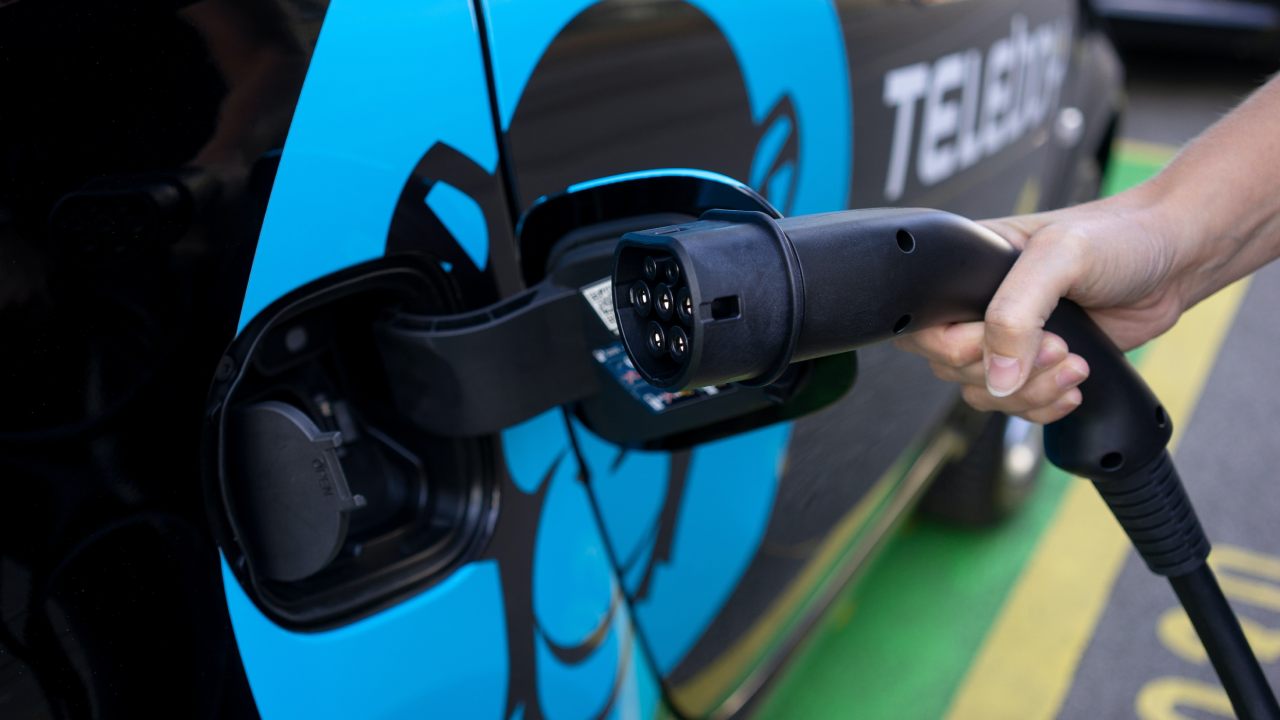Journey into the Heart of Transmission and Drive Train Technology
Share
Picture this: you're sitting behind the wheel, ready to embark on an exhilarating drive. You rev the engine, anticipation fills the air, and suddenly...nothing happens. Your car refuses to budge, leaving you stuck in a comical standstill. What on earth could be the culprit behind this automotive comedy of errors? The answer lies within the unsung heroes of every vehicle: drivetrains and transmissions!

Yes, my friend, these seemingly mundane components hold the key to unlocking the power and motion that propel your four-wheeled companion forward. Drivetrains and transmissions are like the dynamic duo of the automotive world, working in perfect harmony to transfer power from the engine to the wheels, transforming your ordinary car into a speedy, road-conquering superstar.
Now that we've established the essential role of drivetrains and transmissions, let's take a joyride through the fascinating world of these mechanical marvels. Buckle up as we navigate the intricacies of drivetrains and delve into the mysterious realm of transmissions.

In this blog post, we'll cover everything from the basics of drivetrains and their components to the various types of transmissions that make driving a breeze. We'll explore the classic charm of manual transmissions, the effortless convenience of automatic transmissions, and even venture into the realms of continuously variable transmissions (CVT) and dual-clutch transmissions (DCT). Along the way, we'll weigh the pros and cons, consider factors for choosing the right transmission, and unveil some exciting emerging trends and technologies.
So, grab your imaginary driving gloves, prepare for a thrilling ride, and let's unravel the secrets behind drivetrains and transmissions, with a sprinkle of humor along the way. Trust me, by the end of this adventure, you'll be cruising down the road with a newfound appreciation for these unsung automotive heroes.
Stay tuned, folks, as we rev our engines and embark on this enlightening journey through the whimsical world of drivetrains and transmissions. Get ready to shift gears both literally and figuratively, as we dive deep into the heart of vehicular propulsion. Let's get this show on the road!
The Definition and Power Transfer Role of Drivetrains
To comprehend the inner workings of vehicles, it's crucial to grasp the concept of drivetrains. In essence, a drivetrain encompasses the system responsible for transmitting power from the engine to the wheels, enabling forward or backward motion.
Drivetrains serve as the conduit between the potent force generated by the engine and the kinetic energy required to set the wheels in motion. Without this vital link, our cars would remain immobile, like statues on wheels.

Components of a Typical Drivetrain
A typical drivetrain comprises several essential components working together harmoniously:
- Engine: The heart of the vehicle, converting fuel into mechanical energy.
- Transmission: A sophisticated assembly that controls the distribution of power and torque generated by the engine.
- Driveshaft: Transmits rotational force from the transmission to the differential.
- Differential: Divides torque and enables the wheels to rotate at different speeds when turning.
- Axles: Connect the differential to the wheels, transmitting torque to propel the vehicle.
These components collaborate seamlessly, forming a dynamic chain that ensures power delivery to the wheels, allowing us to traverse roads with ease.
The Importance of Drivetrain Configuration
Drivetrain configuration plays a pivotal role in vehicle design, as it is tailored to suit specific vehicle types and purposes. Different configurations offer unique advantages based on factors such as traction, efficiency, and handling characteristics.
For example, front-wheel drive (FWD) setups are popular in compact cars, utilizing space efficiently while offering good traction on slippery surfaces. Rear-wheel drive (RWD) setups, commonly found in sports cars and large sedans, provide better weight distribution, enhancing handling dynamics and allowing for higher power outputs.

Additionally, all-wheel drive (AWD) and four-wheel drive (4WD) configurations offer improved traction by distributing power to all wheels, making them favorable for off-road vehicles and inclement weather conditions.
Selecting the appropriate drivetrain configuration ensures optimal performance, safety, and suitability for specific driving conditions, underscoring the significance of considering the intended vehicle type and purpose during the design and manufacturing process.
Understanding drivetrains is akin to unlocking the secret language of vehicular propulsion. With a solid grasp of its definition, componentry, and the importance of configuration, we are equipped with the knowledge needed to appreciate the intricate ballet that takes place beneath the hood of our cars. So, let's continue our journey deeper into the realm of transmissions, where gear shifting magic awaits!
Exploring Transmissions
The Definition and Significance of Transmissions
Transmissions, the unsung heroes of the drivetrain system, are responsible for managing the power and torque generated by the engine, translating it into the appropriate speed and force required by the wheels. Acting as a mediator between the engine and wheels, transmissions enable smooth and efficient power delivery, making them a critical component in modern vehicles.
Manual Transmissions
How Manual Transmissions Work
In a manual transmission, the driver manually selects the gears using a clutch pedal and a gear lever. The clutch pedal disengages the engine's power from the transmission momentarily, allowing the driver to shift gears. By engaging different gear ratios, the driver can adjust the speed and torque delivered to the wheels.
Ups and Downs of Manual Transmissions
Pros:
Cons:
Automatic Transmissions
Functioning of Automatic Transmissions
Automatic transmissions eliminate the need for manual gear shifting. They use a complex system of gears, torque converters, or clutch packs to automatically select the appropriate gear ratios based on the vehicle's speed, engine load, and driving conditions.

The driver simply selects the desired driving mode (e.g., Drive, Park, Reverse) and lets the transmission handle the gear changes.
Advantages and Disadvantages of Automatic Transmissions
Advantages:
- Effortless and convenient, especially in congested traffic or urban environments.
- Smooth gear changes enhance ride comfort.
- Can optimize fuel efficiency and performance through advanced electronic controls.
Disadvantages:
- Limited driver control over gear selection.
- Generally more complex and expensive to repair or maintain.
- Some older automatic transmissions may have lower fuel efficiency compared to modern counterparts.
Continuously Variable Transmissions (CVT)
Working Principle of CVTs
Continuously Variable Transmissions (CVTs) employ a unique system of pulleys and belts or chains to provide an infinite number of gear ratios. Instead of fixed gears, CVTs flawlessly adjust the gear ratio to maintain optimal engine speed for any given driving situation. This results in smooth acceleration and improved fuel efficiency.
Benefits and Drawbacks of CVTs
- Benefits:
- Smooth and seamless power delivery without distinct gear shifts.
- Optimal engine efficiency under various driving conditions.
- Enhanced fuel economy compared to traditional automatic transmissions.
- Drawbacks:
- Some drivers may perceive a lack of "traditional" gear shifting sensation.
- In certain high-performance applications, CVTs may not offer the same level of sportiness or responsiveness.
Dual-Clutch Transmissions (DCT):
Overview of DCT Technology
Dual-Clutch Transmissions (DCTs) combine features of both manual and automatic transmissions. They use two separate clutches that pre-select gears, enabling quick and smooth gear changes without interrupting power delivery.
While one clutch engages the current gear, the other anticipates the next gear, resulting in lightning-fast shifts.
Performance and Efficiency Advantages of DCTs
By exploring the various types of transmissions, we gain a deeper understanding of the diverse technologies at play in the automotive world. Manual transmissions offer a hands-on and engaging driving experience, allowing drivers to have full control over gear selection and engine performance.
On the other hand, automatic transmissions provide convenience and smoothness, particularly in heavy traffic or urban settings.

Continuously Variable Transmissions (CVTs) introduce a unique approach by offering an infinite number of gear ratios. They excel in optimizing engine efficiency and fuel economy. While some may miss the traditional gear shifting sensation, CVTs provide a seamless and efficient driving experience.
Dual-Clutch Transmissions (DCTs) bridge the gap between manual and automatic transmissions, delivering lightning-fast gear changes without interrupting power delivery. They combine the precision of manual shifting with the convenience of automatic operation, making them popular in high-performance and sport-oriented vehicles.
Each transmission type has its own set of advantages and considerations, and the right choice depends on factors such as personal preference, driving conditions, and intended vehicle use. Automotive manufacturers continually innovate, exploring new transmission technologies to improve performance, fuel efficiency, and the overall driving experience.
As we dive deeper into the realm of transmissions, we uncover the engineering marvels that make our journeys smooth, efficient, and exhilarating. So, buckle up and get ready to explore the intricate inner workings of these fascinating mechanical marvels as we continue our voyage through the exciting world of drivetrains and transmissions.
Factors to Consider in Transmission Selection
When it comes to selecting the right transmission for a vehicle, several important factors should be taken into account. Let's explore these factors in detail:
Vehicle Type and Intended Use
The type of vehicle and its intended purpose play a significant role in transmission selection. Considerations include:
- Sedans and everyday commuter vehicles: Automatic transmissions are commonly chosen for their convenience, smoothness, and ease of use in stop-and-go traffic.
- Sports cars and performance-oriented vehicles: Manual transmissions are often preferred by driving enthusiasts seeking maximum control and engagement.
- Off-road or utility vehicles: All-wheel drive (AWD) or four-wheel drive (4WD) systems with manual or automatic transmissions are popular choices for enhanced traction and capability.
Fuel Efficiency and Performance Considerations
Another crucial aspect to consider is the balance between fuel efficiency and performance. Here are some points to ponder:
- Fuel efficiency: Continuously Variable Transmissions (CVTs) are renowned for their ability to optimize engine performance and fuel economy by continuously adjusting gear ratios. Automatic transmissions with advanced electronic controls can also offer improved fuel efficiency.
- Performance: Manual transmissions are favored by those seeking precise control over gear selection and the ability to rev-match for spirited driving. Dual-Clutch Transmissions (DCTs) are known for lightning-fast gear changes and enhanced performance, making them popular in high-performance vehicles.
Driver Preference and Convenience
The preferences and needs of the driver should not be overlooked when selecting a transmission. Some considerations include:
- Driving experience: Manual transmissions provide a more engaging and connected driving experience, allowing drivers to actively participate in gear shifting. Automatic transmissions offer convenience, especially in heavy traffic or urban settings, where manual shifting can become cumbersome.
- Driver skill level: Manual transmissions require more skill and coordination to operate effectively, while automatic transmissions are more accessible to drivers of all skill levels.
- Lifestyle and preferences: Some drivers simply prefer the feel and control of a manual transmission, while others value the ease of use and convenience offered by automatic transmissions.
Ultimately, the ideal transmission choice depends on a combination of these factors, as well as personal preferences and priorities. Automotive manufacturers strive to offer a range of transmission options to cater to various needs and desires, ensuring that drivers can find the perfect balance between performance, efficiency, and convenience.

By carefully considering the vehicle type, intended use, fuel efficiency, performance requirements, and personal preferences, drivers can make an informed decision when it comes to selecting the most suitable transmission for their needs.
Emerging Trends and Technologies
Introduction to Recent Advancements in Drivetrains and Transmissions
The automotive industry is continuously evolving, and drivetrains and transmissions are no exception. Recent years have witnessed remarkable advancements in technology, revolutionizing the way vehicles transfer power and enhance performance. Let's explore some of these exciting developments.
Examples of Innovative Technologies and Their Impact on the Automotive Industry
- Electric Powertrains and Electric Vehicle (EV) Transmissions: The rise of electric vehicles has spurred the development of dedicated electric powertrains and specialized transmissions. These transmissions optimize power delivery and efficiency in electric vehicles, contributing to improved range, acceleration, and overall performance.
- Hybrid Powertrains and Hybrid Transmissions: Hybrid powertrains combine internal combustion engines with electric motors, requiring innovative transmission solutions to manage power from both sources. Hybrid transmissions enable butter smooth switching between electric and combustion modes, optimizing efficiency and enhancing the hybrid driving experience.
- Dual-Clutch Transmission (DCT) Advancements: Dual-Clutch Transmissions (DCTs) continue to evolve with advancements in technology. These transmissions are becoming more efficient, lightweight, and capable of handling higher torque capacities. The result is improved fuel efficiency, faster gear changes, and enhanced overall performance.
- Continuously Variable Transmissions (CVTs) with Enhanced Features: CVTs have seen advancements aimed at addressing previous concerns, such as rubber-band-like acceleration. Manufacturers have introduced simulated shift points, allowing CVTs to mimic traditional gear shifts for a more familiar driving experience. Additionally, CVTs with improved durability and higher torque-handling capabilities are being developed.
Future Prospects and Potential Developments
Looking ahead, the future of drivetrains and transmissions holds great promise. Here are some potential developments on the horizon:
- Advanced Electric Transmissions: As electric vehicles continue to gain popularity, we can expect the development of even more efficient and compact electric transmissions specifically designed for the unique characteristics of electric motors. These transmissions may incorporate novel gear designs or advanced electronic controls to optimize power delivery.
- Improved Efficiency in Internal Combustion Engines: With increasing pressure to reduce emissions and improve fuel efficiency, there will be a focus on optimizing internal combustion engines. This may involve the integration of advanced transmissions with higher gear ratios, hybridization, or even the adoption of innovative transmission technologies such as continuously variable transmissions (CVTs) in traditional internal combustion vehicles.
- Integration of Artificial Intelligence and Connectivity: Artificial intelligence and connectivity technologies have the potential to revolutionize drivetrains and transmissions. Smart transmissions that adapt to individual driving styles and road conditions can optimize performance and efficiency. Additionally, connectivity features can enable real-time data analysis, predictive maintenance, and over-the-air updates, further enhancing the functionality and performance of drivetrain systems.
- Shift towards Sustainable and Alternative Fuels: As the automotive industry focuses on reducing carbon emissions and environmental impact, there will be a shift towards sustainable and alternative fuels. This may drive the development of new transmission technologies optimized for hybrid, hydrogen fuel cell, or other alternative fuel powertrains.
The world of drivetrains and transmissions is in a state of constant innovation. As emerging technologies continue to shape the automotive industry, we can anticipate more efficient, powerful, and environmentally friendly drivetrain solutions. The future holds exciting possibilities, where advancements in technology will redefine the way we experience and interact with vehicles on the road.










